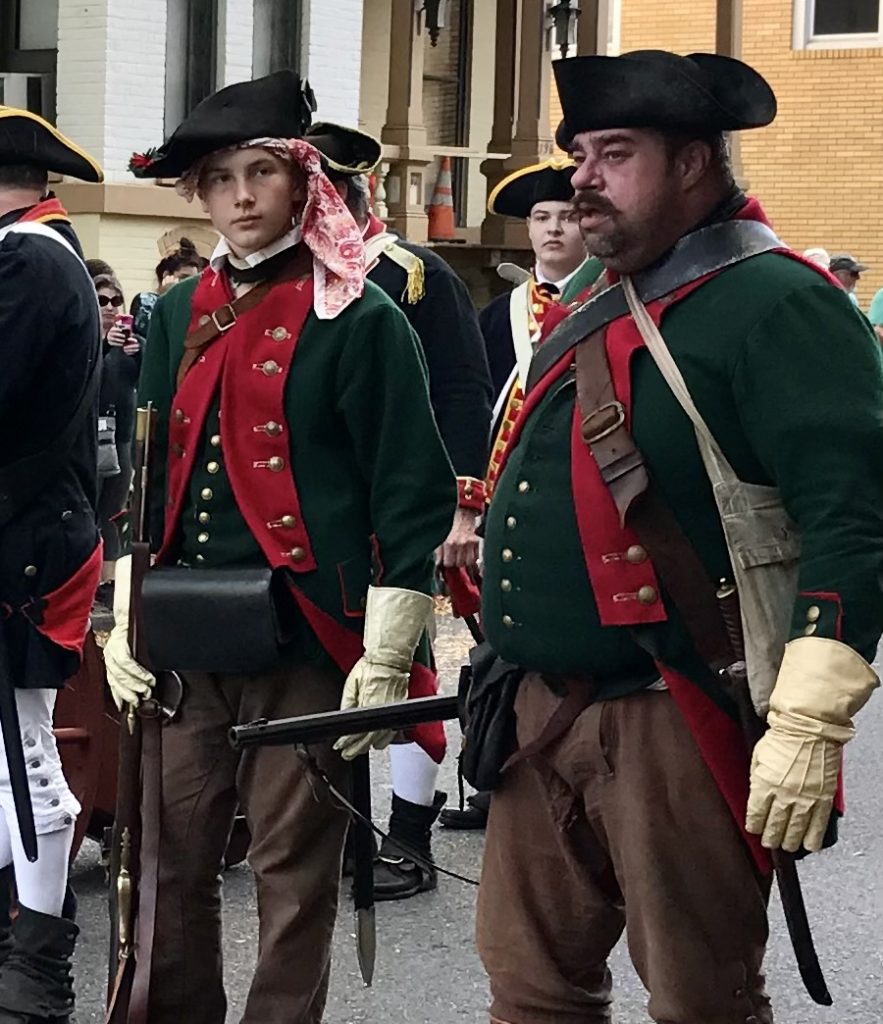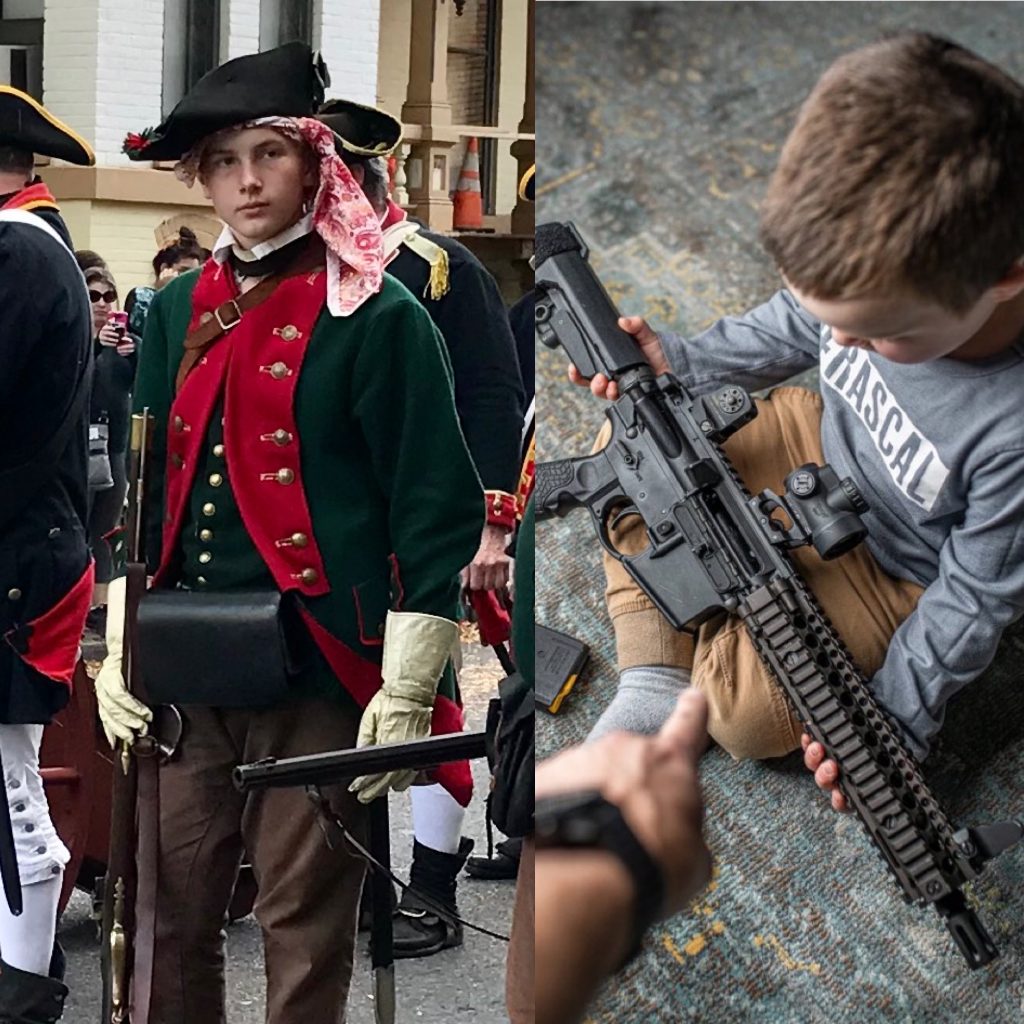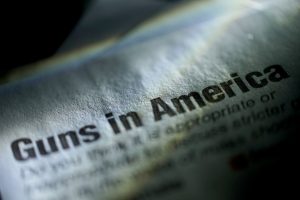It’s Time To Recognize And Regulate The Militia

It’s Time To Recognize And Regulate The Militia

Let’s discuss the Second Amendment for a moment, and let us do so as though we are adults. We can acknowledge that the text is ambiguous enough to justify good faith arguments as to whether it supports individual liberty or collective security. More than 230 mass shootings this year, including the recent slaughter of 19 children in Uvalde, suggests that if the point of the amendment is to protect collective security, then it is failing to do that. However, I argue that there is a way to interpret the Second Amendment to ensure that it protects both individual liberty and collective security. Let’s go to the text:
“A well regulated Militia, being necessary to the security of a free State, the right of the people to keep and bear Arms, shall not be infringed.”
If we leap directly to “right of the people,” then it appears to support the right of people to keep and bear arms free from interference by the State. However, we must consider the amendment in its entirety, which includes what it deems “necessary to the security of a free State.” That would be a “well-regulated Militia.”
States don’t have militias today, at least, not in the form they did when the framers wrote those words; however, the concept remains. In 1787, militias consisted of a population of loosely affiliated men, who understood they could be called upon to defend the state by bearing arms. Today, each state contains a segment of mostly unaffiliated men and women, who take it upon themselves to keep and bear arms in defense of their homes, their families, and their persons. Although there is little modern precedent for the State to call upon this class of firearm owners, preferring instead to use the National Guard; in theory, the State could still call all those who keep and bear arms to its collective defense.
This firearm-owning segment, which, according to a PEW Research study conducted in July of 2021, comprises approximately 32% of the population, and 44% of households, could be seen as the militia that is “necessary to the security of a free State.” After all, many of them view themselves this way. They purchase and own firearms to defend themselves, and presumably the rest of us, against what they fear.
Their fears are not uniform, but individual. Some fear others of different races, religions and political persuasions. Some fear the State itself and keep arms specifically to check state power. But whether they believe they need to defend themselves against felons, foreigners, FEMA, or federal agents, the fact is that many are prepared to do so. This is the modern day militia, and we should classify them as such.
Our founders were very clear, when they worded the Second Amendment, that for this militia to provide defense in a way that is necessary for the security of the free state, they must be well regulated.
When Texas Governor, Greg Abbott, declares that by removing regulations he is protecting the Second Amendment his actions are not supported in the text.
The second amendment REQUIRES regulation.
What should these regulations be? It’s fair for different states and municipalities to regulate differently based on the demographics, density, and historical data of their populations. But there are a few regulations I think we can all agree on, which should be instituted at the federal level.
First, children should not have unsupervised access to firearms. How should we define “children”? Given that we recognize, through our laws, that the brain of an eighteen year old is not yet mature enough, not yet formed enough, to introduce its host to most controlled substances, we can agree that they are not yet mature enough to bear the solemn responsibility of owning a firearm.
Having once been an eighteen year old boy, surrounded by other eighteen year old boys, I can attest that, as a population, they are likely to be emotionally immature, reckless in their behavior, narcissistic in their thoughts, and slow to comprehend the consequences of their actions. Other than those who have joined the military, which in and of itself puts them under adult supervision, we should require a minimum age of twenty one, bare minimum, to take membership in the unaffiliated militia with the right to keep and bear arms.
Second, we should reinstate the ban, for ten years, on the domestic sale and distribution of high capacity magazines. We can’t ban possession of these magazines because they are already within the militia, and any attempt to ban possession – of magazines or firearms – would be seen as a provocative act confirming the worst fears of some that the government is coming for their guns. The ten year ban on domestic sales and distribution of these magazines will reduce the number within the population, encourage anyone who possesses them to lock them away in their homes, and give law enforcement an additional tool to reduce their prevalence in the civilian population.

Third, we need to treat these mass shootings as the public health crisis they are, unique to the United States, which means we need to study the phenomenon. To study it we need data. By law, we should require all sellers, in addition to conducting background checks, to collect certain demographic and geographic data about the buyer, as well as data about the firearm. This data should be gathered, submitted, and stored in disparate databases distributed across separate federal agencies, which can be accessed, on an anonymized basis, to protect the privacy of the militia, through a permissions-based process, by social scientists and policy experts, so they can discern patterns, model scenarios, and make policy recommendations to reduce these mass casualty events.
The perfect shouldn’t be the enemy of the good.
While we may not be able to eliminate mass shootings, we can reduce them. Let us recognize firearm owners as a special class and accept them as the modern day militia. If we trust the wisdom of the founding fathers, if we have the integrity to interpret the full text of the second amendment, and the courage to ensure that the militia is well regulated, then we can build a future that includes individual liberty and collective security for all.
One of our country’s most important freedoms is that of free speech.
Agree with this essay? Disagree? Join the debate by writing to DailyClout HERE.





In todays view “Regulated” means rules. But the text of the amendment “Regulated” means in a condition to work properly. So lets look at the greater definition of “Regulated”
This guy is wrong in every paragraph. He seems to be an apologist for incremental gun control. In particular he mentions nothing about the [DS] machinations via false flag events and government actors nor the Davos globalists’ need to disarm Americans as the last bastion of individual freedom as it pertains to self preservation and resistance.
All of the issues surrounding our second amendment seem to come front and center following a terrible school shooting. In an urgent effort to appease the grief stricken families and oppositional Left, various gun purchasing restrictions’ are fostered by many of our congressional law makers. Sadly, this does nothing to change what has happened, or prevent such tragedies from taking place again and again. Our school systems, and the leadership of any other forms of organized human attendance, must take a serious responsibility for security and protection of life. We all should be prepared to defend our constitution in every way applicable to our individual abilities. The militia of each and every state should be formulating in regulation and urgency of immediate preparedness. A call to arms notice would have already been declared by the patriots of our constitution based on the current and intentional destruction of our country,
It is my prayer that a patriotic movement to organized will rise up before we are all taken hostage. America needs to wake up now!
In all fairness, the author does present an adult, albeit flawed discussion about the 2nd amendment – and militias.
As for militias, each state is different. The National Guard is not a militia. In most states, a governor can still activate a militia – just as it was in colonial times only with modern weapons. Ten years ago, the governor of Colorado and his Adjutant General (a personal friend of mine and USAFA classmate) discussed activating a militia. The founders viewed standing armies as a threat to a free people and militias as a free people protecting themselves.
It is true that the actual wording of the 2nd amendment is somewhat ambiguous and invites the misinterpretation that many make today about the militia clause. That interpretation is dangerously shallow. What is missing is the real context about how the Bill of Rights came about in the first place – which requires an understanding of the roadmap to ratification. The Pennsylvania ratification convention in late 1787 was so contentious that those who approved of the Constitution refused to let those opposed to it enter their objections into the official record. As a result, the “Anti-federalist” published the “Minority Report” in every newspaper in the land. At the time, the Constitution looked like it was going down to defeat and this just about cinched its doom. We would recognize some of these objections in the Bill of Rights today.
In particular, 7th resolution was the real foundation for the second amendment. Resolution 7 read: “That the people have a right to bear arms for the defense of themselves and their own state, or the United States, or for the purpose of killing game; and no law shall be passed for disarming the people or any of them, unless for crimes committed, or real danger of public injury from individuals; and as standing armies in the time of peace are dangerous to liberty, they ought not to be kept up; and that the military shall be kept under strict subordination to and be governed by the civil powers.”
There are a couple of key items that should be clear:
1. The right to bear arms is an INDIVIDUAL right that was to be the basis for state defense, not the other way around.
2. The Anti-federalists acknowledged that there was a potential for public injury from individuals.
The latter point may seem to justify “red flag laws”; however, context is again important. Raising objections is different from authoring a constitutional amendment. The framers were adamant throughout the Philadelphia Convention that the states were to retain “policing powers”, and the new “general government” was not to meddle. Who would impose a threat can only be known by local people, so it made sense for the final second amendment to say “shall not be infringed” to make it clear that anything like a national red flag law would be unconstitutional. whether state or local red flag laws could be constitutional is a separate subject. It depends upon the order of interpretation between the Supremacy Clause and the 10th amendment. The 10th amendment should be interpreted first (as if it were inline like Madison originally proposed). It is common to get this order backwards because of Roger Sherman’s “supplemental mode” of amendment. We were given a federal system, and we have forgotten how to use it.
so, on one hand, Madison/Congress introduced confusion on the reason for the right. on the other hand, they drew a clear boundary to protect that right from the general (federal) government.
finally, the Minority Report is not even the first time the right to bear arms appeared. It appeared as Article XIII in the 1776 Pennsylvania Constitution and Article XVII of the 1776 North Carolina Constitution.
How many firearms do you own? How many militia groups have you met? Please don’t let another media armchair General try to lead real world patriots or craft everyday laws they know nothing about. I’m really shocked to see this kind of content here on Daily Clout.